The Most Expensive Journey of the Richest Man Who Ever Lived
and who brought the price of gold tumbling down
No, I am not talking about any of the billionaires running space exploration companies, or major corporations. I am talking about a King from the Middle Ages.
Musa I of Mali
Mansa Musa (Musa I of Mali) was the king of the ancient empire of Mali in West Africa between 1312 and 1337AD. He became king after his predecessor, Abu-Bakr II (or Muhammad ibn Qu???) went missing during a sea voyage on which he had embarked with the purpose to find the edge of the ocean. Abu-Bakr II had sent ships several times before in search of the end of the sea. At first he had sent some 200 ships and after that accounts say that he sent 2000 ships. While some were lost and never returned, others came back with reports that the ocean is endless. Unhappy with this result, he decided to take the journey himself. After his disappearance, the throne was taken by Mansa Musa, then in his early 20's, who was a deputy to the ill fated adventurous king.
Mali at the time was one of the richest kingdoms of Africa, and Mansa Musa was among the richest individuals in the world. The prosperous empire grew to span a sizeable portion of West Africa, from the Atlantic coast to the inland trading hub of Timbuktu and parts of the Sahara Desert.
Mansa Musa developed cities like Timbuktu and Gao into important cultural centers. He also brought architects from the Middle East and across Africa to design new buildings for his cities. Mansa Musa turned the kingdom of Mali into a sophisticated center of learning in the Islamic world. Timbuktu became a major Islamic university center during the 14th century due to Mansa Musa’s developments.
The main reasons for the wealth of his kingdom were salt, slaves, elephant ivory and, of course, gold.
The Most Expensive Journey
In 1324, Mansa Musa decided to go on a pilgrimage (hajj) to Mecca. His journey took him through Egypt where he and his entourage rocked the world. Because he was not traveling alone. His voyage was afterall about 2700 miles long.
Writers from the time say that he traveled with tens of thousands of soldiers, slaves, heralds, all of them wearing brocade and Persian silk, and dozens of camels, each carrying over 300 pounds of gold dust. Added to these, the men reportedly carried about 4 lb (1.8kg) of gold bars each.
Musa was a very generous man and whenever his caravan came across anyone poor (and that must have been everyone in his path), he gave them gold. He also traded gold for countless exotic souvenirs. It was said that he built a mosque every Friday.
When he arrived in Cairo, he spent three days camping by the Pyramids of Giza. The records show that he at first refused meet with the ruler of the time, the sultan al-Nasir Muhammad. Custom would have required him to kiss the ground and the sultan's hand. And this was not something Mansa Musa was very keen on doing. Eventually he was cajoled into doing so, and most likely avoided a serious incident if not a war by finally submitting to custom.
It is said that while in Egypt and on the whole journey to Mecca, Mansa Musa freely and generously distributed so much gold to all he met, that the scribes write about gold littering the streets. The sheer amount of gold spent by the Malian King depreciated the value of the metal and the whole economy of Egypt took a hit, from which it took 12 years to recover. An Egyptian official, Al-Omari wrote that Musa left “no palm without gold” in the royal palace.
The journey back from Mecca however, would go very differently from the onward travel. By the time they had reached Suez, many of the pilgrims had died of cold, bandit raids, starvation. Their supplies were very much diminished. Eventually and unbelievably, Mansa Musa ran out of money and was forced to borrow and re-sell a lot of what he had purchased on the way in Cairo to be able to afford the journey home.
Upon his return, the fame of the kingdom of Mali had already reached Europe. Traders from Venice, Granada and Genoa started paying attention and added the great city of Timbuktu to their maps of trading manufactured goods for gold.
Some say the the saying "all the way to Timbuktu" comes from these times when most people would not know where exactly the city was located.
We may never know how rich Mansa Musa actually was, because the records of the time are not particularly accurate and historians still argue on the subject, but why not believe that he could have well been the richest man to ever live?
The Historic Recipe
Rice was introduced to West Africa by Arab traders and became a popular food in the Mali Empire, particularly in coastal regions.
I scoured the Internet for an old recipe from Medieval Mali, but I had no luck. Everything I found contained either tomatoes or potatoes, which obviously had not been around at the time of Mansa Musa.
The closest I found is fakoye sauce. It is a dark green sauce served with rice. Fakoye is the name for jute leaf. It is made into a powder by grinding dried jute leaves.
A key ingredient for making this dish is the fakoye spice blend, which will probably prove hard to find so you can try to substitute it with a mix of a teaspoon each of aniseed, cumin, cinnamon, black pepper, onion powder, and ground cloves.
You also need soumbala powder, also known as ground dawadawa or locust beans. If you can’t find it and I sure can’t, you can just skip it.

Fakoye powder (ground jute leaf)
Lamb, chopped into cubes
Fakoye spice mix
Shea butter or oil
Dates or tamarind
Onions (optional)
Garlic (optional)
Soumbala / dawadawa
Salt and pepper as needed
Fry the lamb cubes and add the rest of the ingredients until it forms a thick, pasty sauce. If necessary, add some water. Serve with rice.
Tea is also a very popular drink in Mali. Malian tea is a sweetened, concentrated brew made with Chinese green tea and mint leaves. It is served in tiny glasses in 3 bursts. The first serving of tea is said to be like ‘death’ as it is a bit bitter and strong.
The second serving is called ‘life’ as it starts getting sweeter. The last and final serving is called ‘love’.


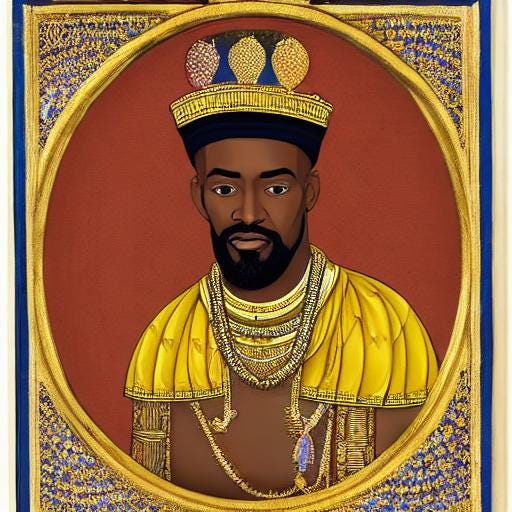
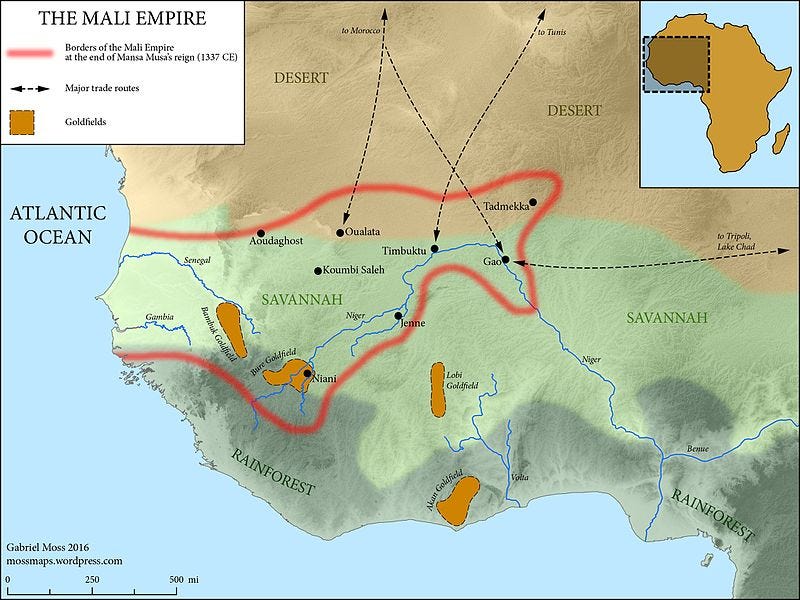
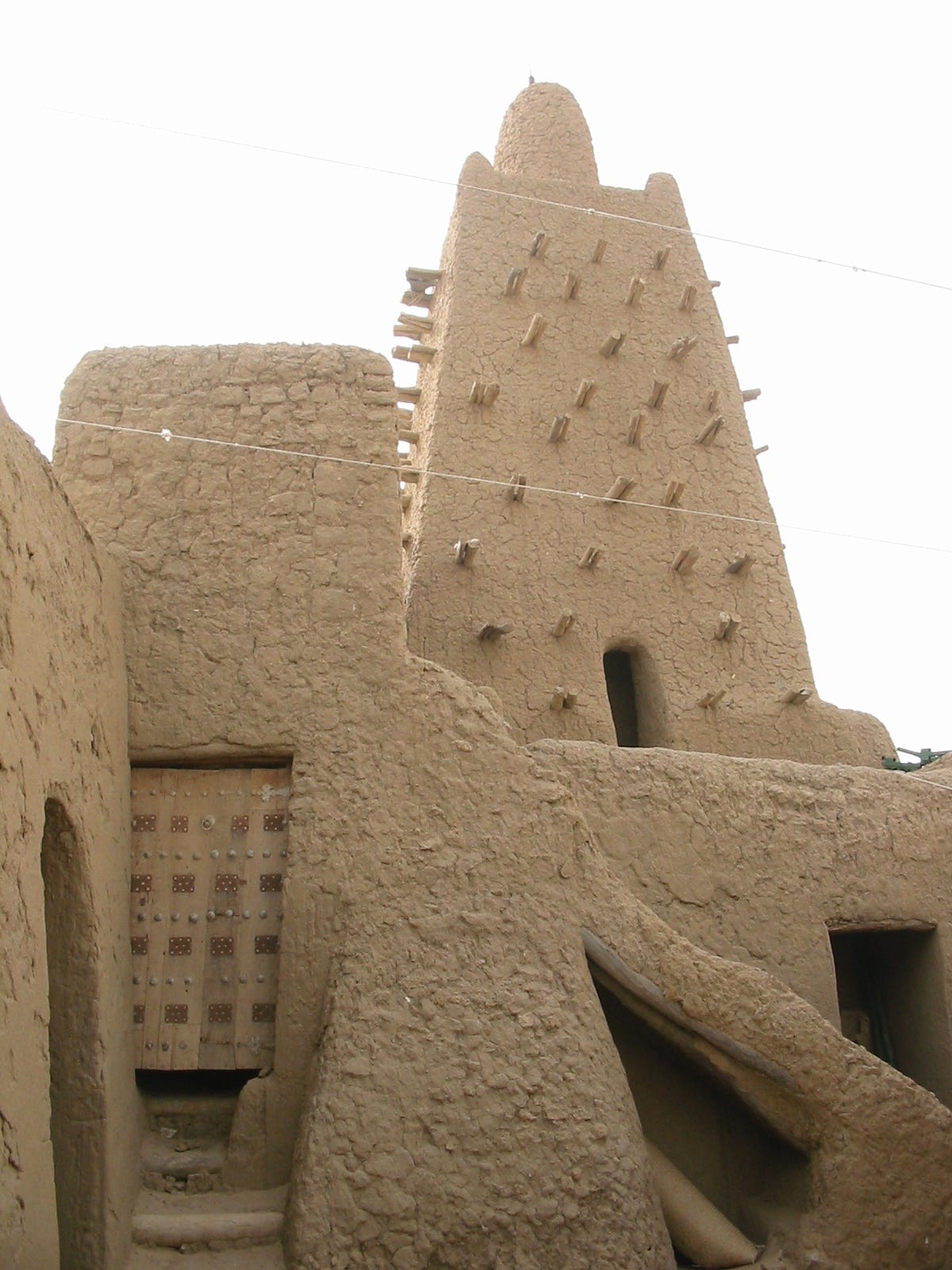
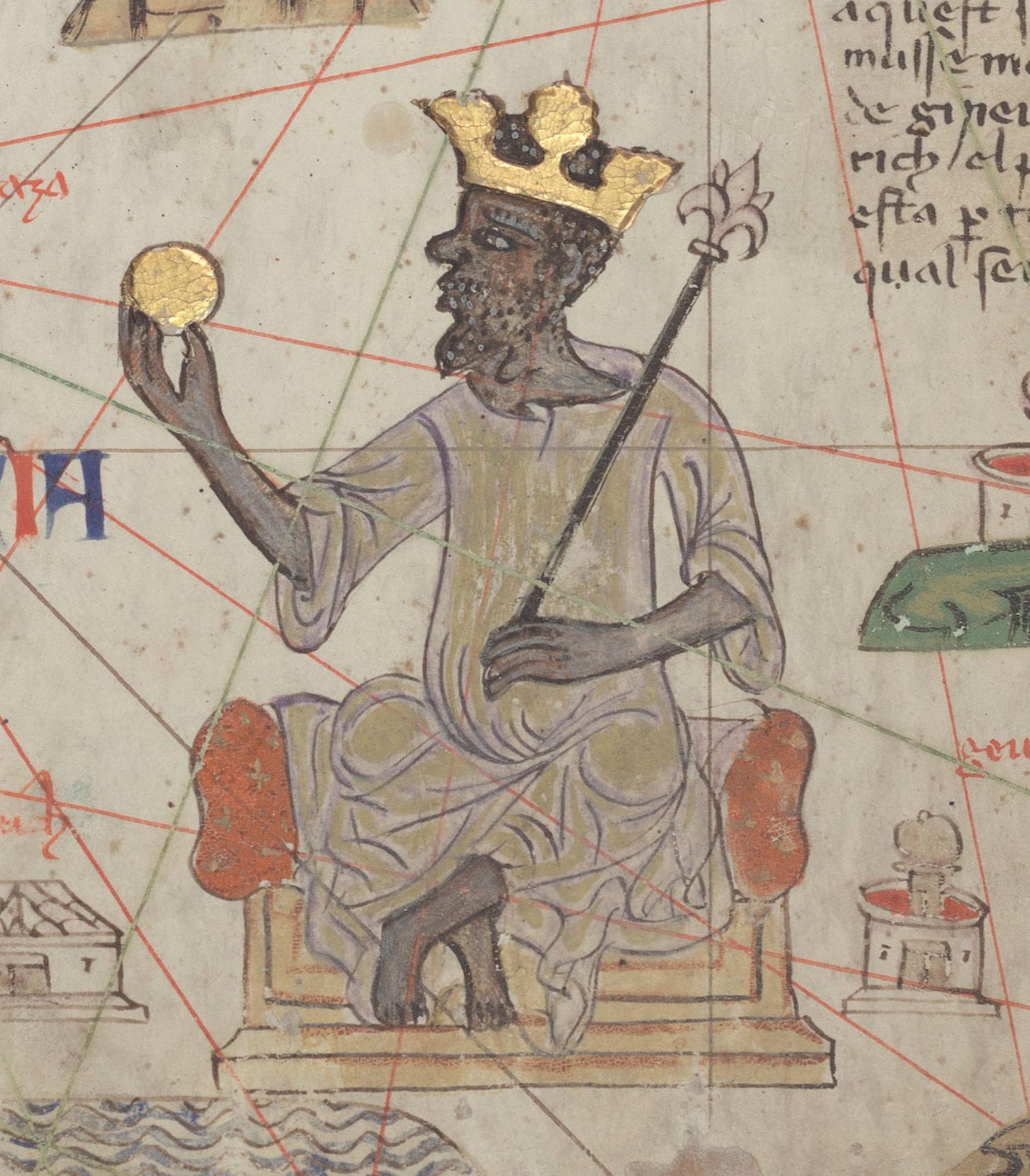
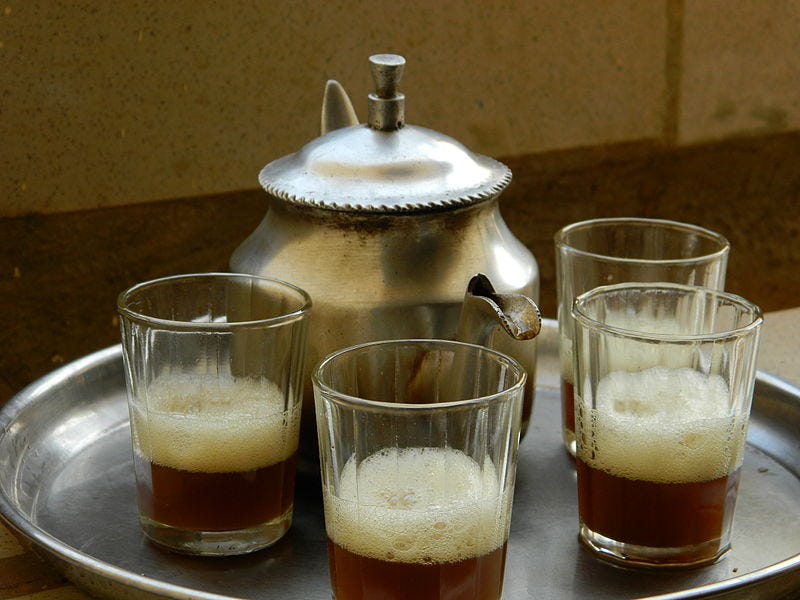
Sandra- This is beautiful. Mansa’s journey and the depiction of gold littering in the streets is one of the stand out parts of this piece. A wonderful read!